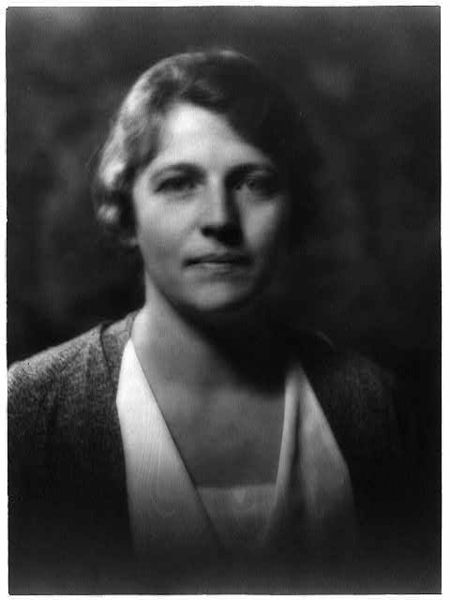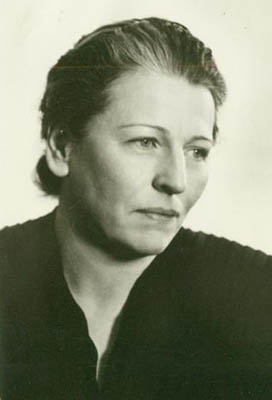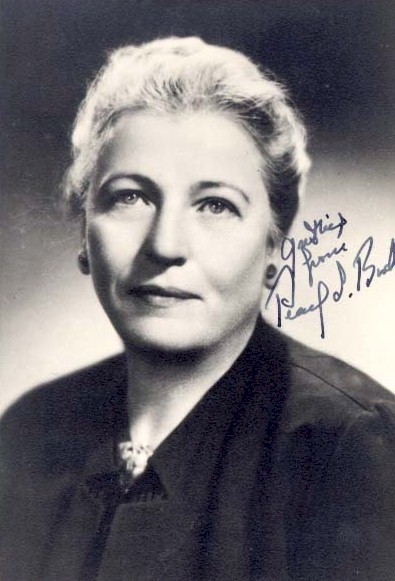<Back to Index>
- Astronomer Charles Messier, 1730
- Writer Pearl Sydenstricker Buck, 1892
- 6th President of Argentina Bartolomé Mitre, 1821
PAGE SPONSOR



Pearl Sydenstricker Buck (June 26, 1892 — March 6, 1973) also known by her Chinese name Sai Zhenzhu (Chinese: 賽珍珠; pinyin: Sài Zhēnzhū), was an award winning American writer who spent most of her time until 1934 in China. Her novel The Good Earth was the best selling fiction book in the U.S. in 1931 and 1932, and won the Pulitzer Prize in 1932. In 1938, she became the first American woman to be awarded the Nobel Prize in Literature, "for her rich and truly epic descriptions of peasant life in China and for her biographical masterpieces."
Pearl was born in Hillsboro, West Virginia, to Caroline Stulting (1857 – 1921) and Absalom Sydenstricker. Her parents, Southern Presbyterian missionaries, traveled to China soon after their marriage on July 8, 1880, but returned to the United States for Pearl's birth. When Pearl was three months old, the family returned to China to be stationed first in Zhenjiang (then often known as Jingjiang or, in the Postal Romanization, Tsingkiang). Pearl grew up bilingual, tutored in English by her mother and in classical Chinese by Mr. Kung.
The Boxer Uprising greatly affected Pearl and her family. Pearl's Chinese friends deserted her and her family, and Western visitors decreased too.
In 1911, Pearl left China to attend Randolph - Macon Woman's College in Virginia, US, graduating (Phi Beta Kappa) in 1914. From 1914 to 1933, she served as a Presbyterian missionary, but her views later became highly controversial in the Fundamentalist – Modernist Controversy, leading to her resignation.
In
1914, Pearl returned to China. She married an agricultural economist
missionary, John Lossing Buck, on May 13, 1917, and they moved to Suzhou, Anhui Province,
a small town on the Huai River (not be confused with the better known
Suzhou in Jiangsu Province). It is this region she described later in The Good Earth and Sons. From 1920 to 1933, Pearl and John made their home in Nanking (Nanjing), on the campus of Nanjing University, where both had teaching positions. Pearl taught English literature at the University of Nanjing and the Chinese National University. In 1920, the Bucks had a daughter, Carol, afflicted with phenylketonuria.
In 1921, Pearl's mother died and shortly afterward her father moved in.
In 1924, they left China for John's year of sabbatical and returned to
the United States for a short time, during which Pearl earned her Masters degree from Cornell University. In 1925, the Bucks adopted Janice (later surnamed Walsh). That fall, they returned to China. The tragedies and dislocations that Pearl suffered in the 1920s reached a climax in March 1927, during the "Nanking Incident". In a confused battle involving elements of Chiang Kai-shek's
Nationalist troops, Communist forces, and assorted warlords, several
Westerners were murdered. Since her father Absalom was a missionary,
the family decided to stay in Nanjing until the battle reached the
city. When violence broke out, a poor Chinese family allowed them to
hide in their hut while the family house was looted. The family spent a
day terrified and in hiding, after which they were rescued by American
gunboats. They traveled to Shanghai and then sailed to Japan, where
they stayed for a year. They later moved back to Nanjing, though conditions remained dangerously unsettled. In 1934, they left China permanently. In 1935, the Bucks were divorced. Richard Walsh, president of the John Day Company and her publisher, became Pearl Buck's second husband. The couple lived in Pennsylvania. During the Cultural Revolution Buck,
as a preeminent American writer of Chinese peasant life, was denounced
as an "American cultural imperialist." Buck was "heartbroken" when Madame Mao and high level Chinese officials prevented her from visiting China with Richard Nixon in 1972. Pearl S. Buck died of lung cancer on March 6, 1973 in Danby, Vermont and was interred in Green Hills Farm in Perkasie, Pennsylvania. She designed her own tombstone. The grave marker is inscribed with
Chinese characters representing the name Pearl Sydenstricker. Buck
was highly committed and passionate about a range of issues that were
largely ignored by her generation; many of her life experiences and
political views are described in her novels, short stories, fiction, children's stories, and the biographies of her parents entitled Fighting Angel (on Absalom) and The Exile (on Carrie). She wrote on a diverse variety of topics including women's rights, Asian cultures, immigration, adoption, missionary work, and war. In 1949, outraged that existing adoption services considered Asian and mixed race children
unadoptable, Pearl established Welcome House, Inc., the first
international, interracial adoption agency. In nearly five decades of
work, Welcome House has placed over five thousand children. In 1964, to
support children who were not eligible for adoption, Buck established
the Pearl S. Buck Foundation to "address poverty and discrimination
faced by children in Asian countries." In 1965, she opened the
Opportunity Center and Orphanage in South Korea, and later offices were
opened in Thailand, the Philippines, and Vietnam. When establishing
Opportunity House, Buck said, "The purpose... is to publicize and
eliminate injustices and prejudices suffered by children, who, because
of their birth, are not permitted to enjoy the educational, social,
economic and civil privileges normally accorded to children." In the late 1960s, Pearl toured West Virginia to raise money to preserve her family farm in Hillsboro, WV. Today The Pearl S. Buck Birthplace is a historic house museum and cultural center. She
hoped the house would "belong to everyone who cares to go there," and
serve as a "gateway to new thoughts and dreams and ways of life." Long
before it was considered fashionable or politically safe to do so, Buck
challenged the American public on topics such as racism, sex
discrimination and the plight of the thousands of babies born to Asian
women left behind and unwanted wherever American soldiers were based in
Asia. During her life Buck combined the multiple careers of wife,
mother, author, editor and political activist. Contemporary
reviewers were positive, and praised her "beautiful prose," even though
her "style is apt to degenerate into over repetition and confusion." Peter
Conn, in his biography of Buck, argues that despite the accolades
awarded her, Buck's contribution to literature has been mostly
forgotten or deliberately ignored by America's cultural gatekeepers. Kang Liao argues that Buck played a "pioneering role in demythologizing China and the Chinese people in the American mind." Phyllis Bentley,
in an overview of her work published in 1935, was altogether impressed:
"But we may say at least that for the interest of her chosen material,
the sustained high level of her technical skill, and the frequent
universality of her conceptions, Mrs. Buck is entitled to take rank as
a considerable artist. To read her novels is to gain not merely
knowledge of China but wisdom about life." Anchee Min,
author of a fictionalized life of Buck, broke down upon reading Buck,
because she had portrayed the Chinese peasants "with such love,
affection and humanity"." Buck was honored by the United States Postal Service with a 5¢ Great Americans series postage stamp. (賽
珍珠故居) Pearl's former residence at Nanjing University is now the Nanjing
University Science and Technology Industry Group Building along the
West Wall of the university's north campus. U.S. President George H.W.
Bush toured the Pearl S. Buck House in October 1998. He expressed that
he, like millions of other Americans, had gained an appreciation for
the Chinese through Pearl's works.